Strawberry variety Monterey
Monterey is a remontant variety of garden strawberries (strawberries), a descendant of the well-known Albion... Bred in 2001 at the University of California, USA by crossing the number choice cal. 27−85.06 and the actual variety of Albion. For several years, the obtained plants were tested, and in 2009 a new strawberry was registered and patented. The novelty inherited the best qualities from its eminent ancestor and even surpassed it in its characteristics. It is 35% more productive, has better taste, and is also devoid of Albion's main drawback - although the berries are dense, but not hard, without apple crunch when biting. For Russia and Ukraine, this strawberry is still quite new, but it has already gained very great popularity and has collected many positive reviews about itself. Monterey is recommended for growing outdoors in a continental climate, as well as in greenhouses.
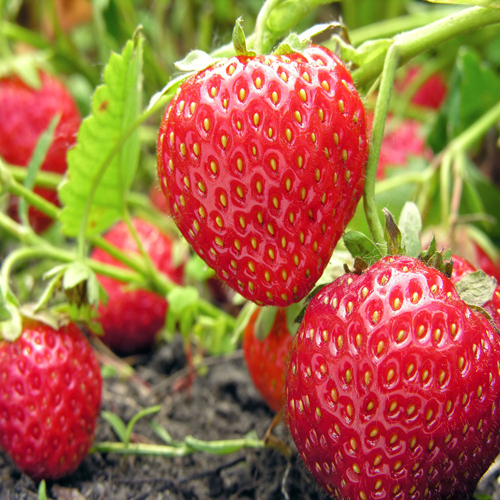
The plant is powerful, moderately leafy. The cultivation of the variety is moderate, even meager, which is very attractive for commercial cultivation - removing the mustache will not take much time and effort. The leaves are large, bright green, with a glossy sheen. Peduncles are strong, tall, hold unripe fruits well, but as they ripen, they are laid on the ground. Strawberries form a fairly large number of peduncles (10-14 pieces), on which, in turn, a lot of fruits are tied. In general, externally, the Monterey bush is very similar to Albion, but a little more voluminous and requires a slightly looser planting.
The berries of the variety are large, very beautiful and spectacular, of the correct blunt-conical shape, less elongated than that of Albion, sometimes they can be doubled. The skin is claret-red, with a glossy shine, when fully ripe, it acquires an almost cherry hue, at this stage it is gaining the best flavor palette. Achenes are yellow, small, shallowly depressed, practically invisible when used. The pulp is light red, firm, juicy, with a medium or weak aroma, the intensity of which depends on the stage of ripeness of the berry. Like its ancestor, Monterey is distinguished by a high yield of marketable fruits, their uniformity in size and uniformity of shapes.
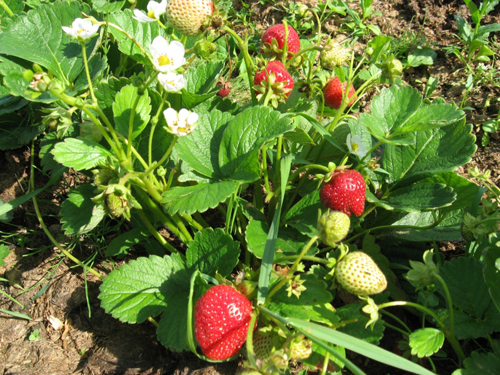
Strawberry tastes excellent, harmonious, with an ideal balance of sweetness and delicate acidity. In general, reviews about the taste of our hero are very different. He seems mediocre to some, the latter admire him, and still others say that the fruits of this variety are tastier than those of Albion, but in comparison with other varieties they do not really stand out. In a word, Monterey also inherited from his parent controversy about the taste of berries. If we return to reality and do not take into account the personal preferences of everyone, we can say the following - the flesh of our hero is softer than that of Albion, but the berries still have excellent transportability; strawberries taste good, maybe not particularly outstanding, but clearly not bad and not bland, or, as it was fashionable to say about Albion, not "foam".
The fruits are versatile in use, beautiful in their natural form and are excellent for marketing as fresh products. Also berries are suitable for any kind of processing, very good for freezing. Strawberries perfectly tolerate transportation, have an excellent presentation, in a word, they meet all market standards and are very attractive for commercial cultivation.
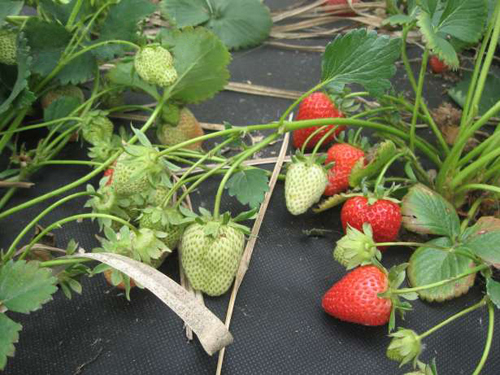
When tested at plots in Watsonville (California, USA) in 2005-2007, the average size of Monterey berries was recorded at around 32.6 grams. In general, with competent agricultural technology, such a weight of fruits is very real throughout the entire fruiting season. Since the variety is remontant, it is able to stably form large, numerous fruits from harvest to harvest. With moderate agricultural technology, the mass of berries ranges from 20-35 grams.Strawberry yields are high, but highly variable depending on the intensity of cultivation. With moderate technology, it is advisable to talk about indicators of 500-700 grams per bush, up to a maximum of 1 kg. With intensive agricultural technology, the numbers increase significantly - it is possible to get about 2 kg of berries per plant, and under really ideal growing conditions even up to 3 kg!
But it should be understood that such high results are achievable only when Monterey is cultivated indoors with careful control over all possible characteristics of the environment, as well as with abundant dressings with a cocktail of fertilizers and growth stimulants, and regular treatments against diseases and pests. Generally speaking, you shouldn't make big plans and place high hopes on strawberries if you are not going to provide them with truly ideal conditions. The variety has enormous potential, but it is impossible to reveal it with moderate agricultural technology, so do not believe the advertisement that promises transcendental 3 kg per bush.
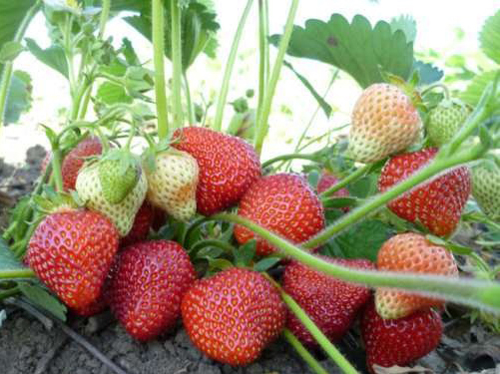
Fruiting at Monterey is undulating, includes about 3-4 waves. With proper care, the harvest will be plentiful and tasty in every season. In open ground in a continental climate, flowering begins approximately in the first decade of May, the first collection takes place in late May - early June. Fruiting lasts until October-November. In protected ground and providing all the necessary conditions (temperature, illumination
The variety has a very good immunity, at the standard level, especially resistant to powdery mildew. But it should be said that timely high-quality preventive treatments play a very important role in the success of growing this strawberry, as well as all other commercial varieties. Winter hardiness and frost resistance in Monterey are at an average level, it is highly desirable to have a good shelter in winter and spring. In general, the plant is very thermophilic, it tolerates heat quite calmly, the berries are not baked in the sun, moreover, the variety does not tolerate shading well. Drought tolerance is generally good, but the dry season will hit yield hard and may also affect palatability.
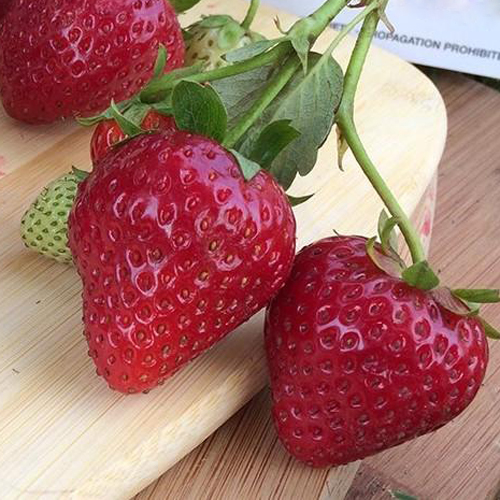
In agricultural technology, strawberries are standard, but they require a very painstaking attitude towards themselves. We will not list all the main care measures, but we will only say that they must be carried out efficiently and on time. Of the features, only a few points can be distinguished.
- The need for a looser planting - the distance between the bushes should be 35-40 cm, thickening leads to a decrease in yield and an increase in the risk of diseases.
- As already mentioned, Monterey does not like shading, so you need to choose a sunny site for landing.
- Do not skimp on feeding. The better nutrition you provide to the strawberries, the more they will delight you. Foliar top dressing is also highly desirable, along with fertilizing the soil.
- With intensive agricultural technology, it is advisable to use plants for no more than one year. With moderate, you can keep the plantation for up to two years, and then renew it. Longer use is undesirable, since remontant varieties very quickly deplete their entire resource, and in the third or second year of life they are no longer able to yield at the declared level, and there will be no strength left for the mustache, besides, immunity will decrease. In general, it is extremely important to update the planting material so that the variety continues to delight you.
- Monterey forms very few whiskers, which is very convenient on the one hand, but breeding problems can arise. Therefore, it is advisable to divide the planting into a mother garden, where strawberries will be grown in order to obtain a mustache, and a section on which the bushes will be used only for harvesting. Plants in the mother liquor should pluck out the color, that is, do not allow them to bear fruit, in order to direct all their forces to the formation of whiskers.
In conclusion, we will not list again the advantages and disadvantages of the variety, let's just say that it is very promising and is a worthy replacement for its ancestor Albion. Commercially, Monterey is very attractive, as it meets all the established market standards, but as for growing it on a personal garden plot, the question is very interesting. In principle, we can say that this strawberry is "for everybody's taste." Not everyone likes it, like its ancestor, but still it is worthwhile to understand that the variety is "sharpened" precisely for commercial use, and it fully corresponds to this direction.
Let us mention one more small nuance that should be paid attention to. The variety is relatively new and very popular, so there is a high probability of falsification of seedlings. Be very vigilant when buying seedlings, purchase only from trusted, responsible sources. This is really a very important point, because, as they say, the wrong bees make the wrong honey, and if you carelessly treat the acquisition of planting material, you can get the wrong impression about the variety, under the guise of which a completely unknown specimen without clan and tribe arrived at your site.




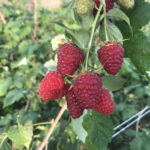
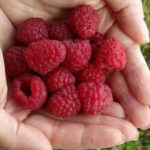



We took this variety for planting, for testing, so to speak. I want to eat a fragrant berry not only in May, but all summer long. The choice fell on him after studying reviews on Internet forums. What have we got in practice? The first and most important benefit is the taste of the berry. We have Monterey fragrant, sweet, moderately dense, it never even occurred to compare with Albion.
The first fruiting in May was deliberately not allowed - the inflorescences were cut off. But when the spring (May) strawberries left, our Monterey gave the second wave of fruiting, but in fact the first harvest. This is a delight, the berry turned out to be large, one to one. The next harvest (late July - early August) will be weaker. I think, because of the heat, after all, this variety does not tolerate it well. Without a drop and a shading mesh, it can dry out altogether.
Monterey is a favorite. it is a pity that it does not winter with us in Siberia. And the problems with taste are the same as in many other varieties: it turns red early, and it gains color very brightly - and SINGING after three days. And if you gobble it up like a “traditional” variety, as soon as it turns red, it’s an eerie plastic sourness in terms of hardness. But when it is ripe, it has a rich rich taste, with sourness, but very in moderation. The berry is dense, but not tough, it is pleasant to eat it. The bush is powerful, the mustache drives thick, like a linen cord, and immediately throws out new inflorescences on the outlets.
I compared it with Albion, planted it at the same time - and Albion was just not edible at all, at any time, plus it was small and the bushes were weak. You have to try everything at home.